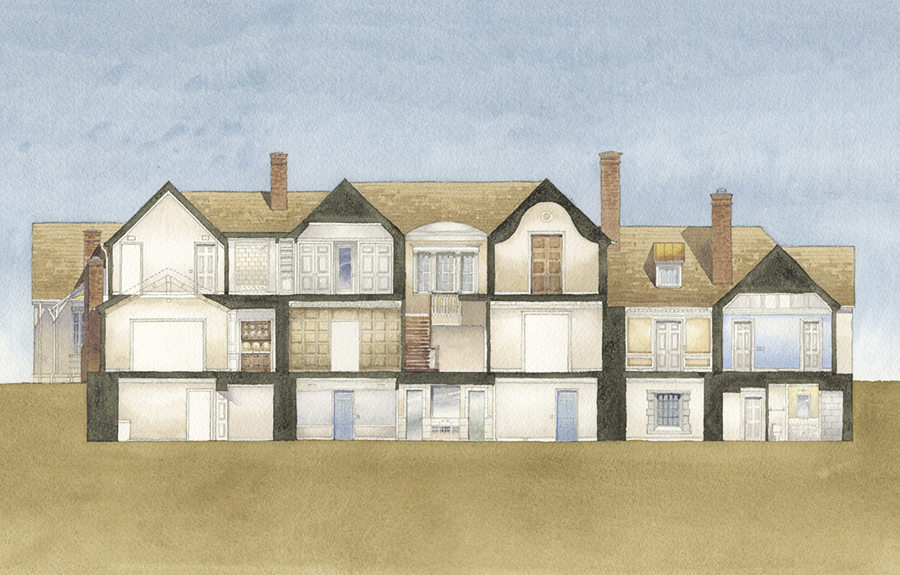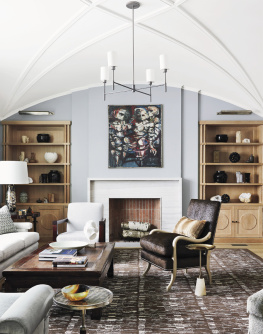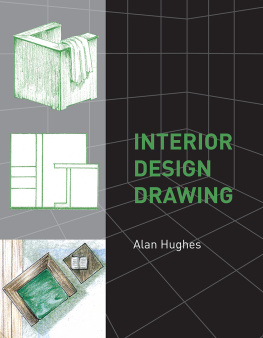



This book is most affectionately dedicated to my wife, Phoebe, without whose encouragement, love, support, good humor, and talent it simply wouldnt have been possible. (Life wouldnt be much fun without her, either.)


FOREWORD
While its a given that the places we call home should provide shelter, there is more to creating truly great rooms than shopping for the essentials and playing with the decorative elements.
I remember the first time I walked into an apartment designed by Jim Howard. There were details everywhere that caught my attention: exquisite architectural features, mesmerizing colors, and the touch of luxurious fabrics on the upholstery, to name just a few. But the real impression those rooms made on me was much deeper. They simply felt wonderful to be in, and you never forget rooms with that kind of subliminal appeal.
Interior designers play many practical roles and employ an astonishing array of skills in the practice of their craft. But the most talented among them are actually artistsif not downright alchemistsable to transform the blank canvas of four walls, a floor, and a ceiling into something Ive come to think of as poetry in space.
When a room has good bones to start, decoration doesnt have to do much heavy lifting. Most spaces dont have such wonderful architectural bones, however, and in those instances it takes a designer as skilled as Jim to transform the ordinary into the extraordinary. His interiors are so appropriate, and so beautiful, you really cant imagine that before he worked his indelible magic the spaces could have possibly been sad or lacking in polish.
You can feel the sense of atmosphere in the rooms Jim creates, something that may be more important these days than ever before. Our homes should be our sanctuaries in every sense of the word, and, when imagined by the right discriminating, sophisticated eye, their designs can have the ability to nurture and elevate life through the substance of beauty. Jim Howard has just such an eye; he is a master at making rooms magically come alive.
Newell Turner
Editorial Director, Hearst Design Group
ELLE Decor, House Beautiful, and Veranda

Only by carefully considering and thoughtfully combining the seven elements of great designstyle, scale and proportion, rhythm, light, color, texture, and soundwill interiors have atmosphere. Their balance is the secret to creating rooms and residences that impress and inspire.
INTRODUCTION
Atmosphere is the magic that an entire residence can have when it is beautifully designedthe complex murmur of mood and undercurrent of refinement in a lovely setting. It embodies the power a space has to capture your attention and please your senses, embracing you and making your eyes dance around your surroundings. It is the wow factor.
But even as atmosphere can excite and animate, it can also soothe and calm. And thats of equal importance, because it offers an overall feeling of well-being, ease, and contentment. Spaces with atmosphere are both comfortable and comforting.
To recall an instance when you experienced a place like this, think of a building or an interior that triggered a seemingly contradictory combination of stimulation and relaxation. For me, its when I first saw Mario Buattas famed blue-and-white bedroom at New Yorks Kips Bay Decorator Show House, where the dynamic, curtained, and fringed canopy bed in the middle of the space almost grazed the ceiling. Thanks to its signature butter-yellow color and the way it plays with baroque scale, classical proportions, and natural light, the late British decorator Nancy Lancasters famed drawing room behind the Colefax & Fowler shop on Londons Brook Street also all but blew me away when I had the chance to see it. And atmosphere isnt just reserved for traditional design or for residences. The overall effect of Frank Gehrys titanium-clad Walt Disney Concert Halland the pleasure people take from visiting itcomes from the entirely contemporary feats of architectural acrobatics achieved by its gentle curves, both inside and out.
Each of these places makes manifest a supreme sense of atmosphere. Not only does their aesthetic beauty resonate with us but also their consistency, authenticity, relevancy, and, above all, their humanity. They are correctly designed, to be sure, but also awesome and awe-inspiring.
People often imagine that interior designers and decorators simply create and decorate spacesputting a wall here, hanging curtains there, selecting a light fixture for the ceiling, a color for the wall. But to think like that is to miss the larger picture. The mission of designers such as myself goes much deeper, and our goals are much loftier.
I became a designer because I had a passion for helping my clients make homes that achieve a profound sense of atmosphere, and Ive committed my career to that goal.
It was a childhood visit to the historic Mediterranean revival Miami mansion-turned-museum Vizcaya that first gave me an appreciation of atmosphere, and, as I look back on it, its also probably what ignited my passion for design and drove me to the profession in the first place. I was about fourteen at the time, growing up in Florida, and my parents made sure I was exposed to wonders like thislocations and experiences that would expand my horizons and inspire my future. And it worked.
The architecture and decoration of Vizcaya didnt just impress me, however; they moved me emotionally, making a profound sentimental impact on my young self that was unlike any other Id previously experienced. I remember thinking at the time, One day, I wouldnt mind doing something like this, creating a place with such aesthetic importance and emotional power.
Prior to that Vizcaya visit, I never really dreamed of being a designer. Where I was raised, in the years that I was coming of age, it didnt quite seem like a career possibility. In high school, I took a job driving the delivery truck for a local furniture store after class and on Saturdays. Later, as graduation approached, I knew I wanted to get myself to New York City, and I thought of the furniture business as something that could take me there.
I had a vague idea of a design college in Manhattan called Parsons. On something of a whim, I applied. The school accepted me, and to this day, I consider my studies there as some of the greatest years and one of the most influential forces of my life. I discovered, and then significantly deepened, my passion for design at Parsons, and I became smitten with the idea of creating lasting, important houses. I am still following that dream.
Next page


















